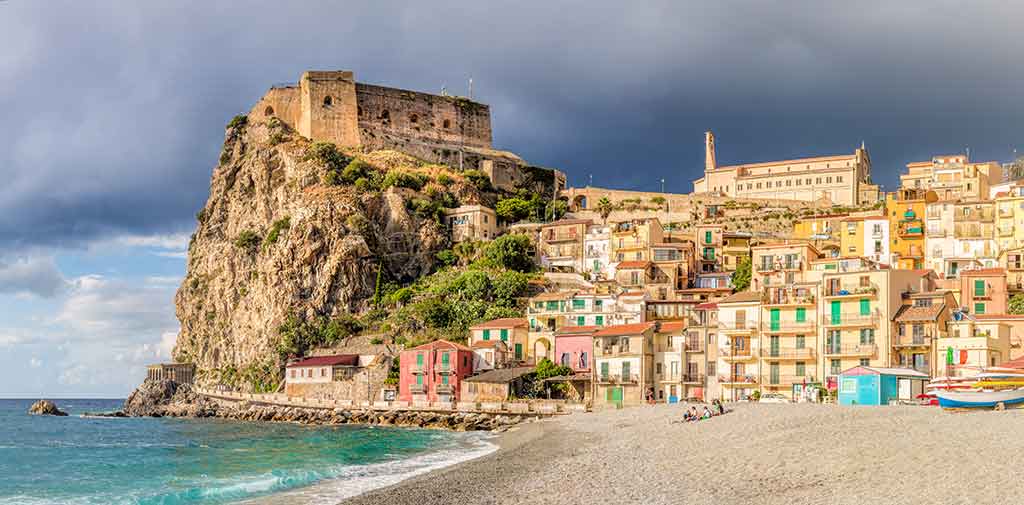Welcome
to Scilla Italy. If you’are planning to visit Scilla for your next trip and you are
looking for the best places to visit, here you’ll find tips and suggestions of most
popular point of interest and activities not to be missed in Scilla and surrounding.
Travelers will appreciate this italian town with
his rich historical and artistic heritage, local culture and environment. Discover the monuments, buildings, natural
treasures and all the details that characterize Scilla and its territory. Share and suggest a place you've
visited.

Scilla beach
Do you remember Scylla and Cariddi, two mythological monsters described by Homer? Well, because the background of the Odyssey was set right here, in Calabria. Right here is a small and charming town that bears the same name as one of the monsters, Scilla.
Scilla is perched on the slopes of a rocky promontory. At the highest point is the Castle of the Ruffo which, overlooking the sea, dominates the ancient fishing village and from which you can admire a view to take your breath away. The charm of Scilla, however, is hidden not in the monuments (and you will not find many), but among the alleys of the picturesque Chianalea district where the characteristic small houses go down steps towards the sea and boats. It is the neighborhood much loved not only by tourists, but also by painters and poets. The alleys hide colorful wrought-iron balconies, ancient portals, boats and fishing gear. You can participate in the lives of the inhabitants, throwing curious glances in the houses lapped directly from the sea or by exchanging words with fishermen busy with nets.
Calabria owes its notoriety to the sea and the beaches and, in fact, the beach of Scilla called the Sirene beach (it is known as Marina Grande, to distinguish it from the beaches that are located in the Chianalea district) is wonderful. It is composed of golden sand sometimes mixed with gravel, depending on the winter storm, and bathed by the beautiful sea with enchanted colors and rich in marine fauna and flora.
written by Ralph Christie - Last update: 29/10/2021
This guide has been translated automatically through a third party service. Visititaly offers these automatic translations to help site visitors, however the automatic translations may contain inaccuracies, errors or inaccuracies. You can contact us to report inaccuracies or errors and we will check the translation.